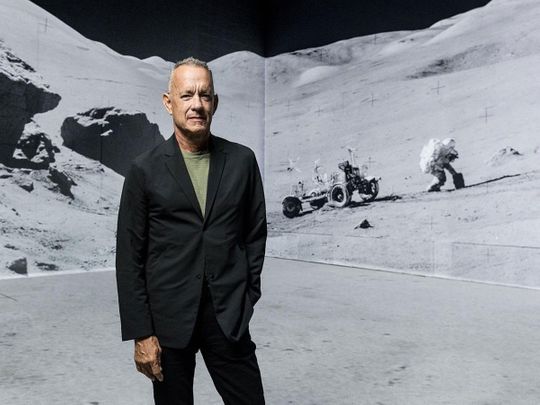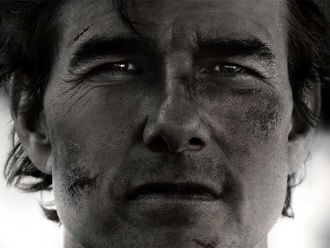
ALSO IN THIS PACKAGE
- See: Hollywood stars Kate Winslett, Kylie Minogue, Manushi Chillar and others at London Fashion week
- Top 10 Hollywood, Bollywood movies and TV shows to watch this weekend like Shah Rukh Khan's blockbuster 'Jawan'
- In pictures: Nicole Kidman, Leonardo DiCaprio and Eva Longoria, when Hollywood turned out to cheer for tennis at the US Open
- Top ten Hollywood and Bollywood films and shows to watch this weekend, including Kareena Kapoor's new thriller
Hollywood star Tom Hanks said that he would clean the toilets just to make it to outer space.
The actor previously turned down Amazon co-founder Jeff Bezos' offer to board his Blue Origin flight before 'Star Trek' star William Shatner accepted the invitation but he didn't want to hand over a staggering $28 million (Dh102.84 million) to take part, reports aceshowbiz.com.
But now, Hanks has confessed he'd do just about anything to make it into outer space.
He told The Daily Telegraph: "I would like to be the guy in charge of serving food and making jokes to and from the moon. If there was room, I would be the guy that cleans up, makes jokes, tells stories and keeps everybody entertained. I'm your man.”
“I would probably sign up right now. That might be a good idea. I'll do all the work. I'll clean the toilet. I'll serve the food. I'll fold the clothes. I'll stow the gear. That way the others could be free to do other stuff."
On the history-making day man first set foot on the Moon, Hanks, who was 13 at the time, said: "I walked around the day of July 20, 1969, very cognisant that I was alive at a time when the history of humankind shifted. We were now the generation that was alive when we landed a man on the Moon.”
“I felt that same way about going to the Moon as people did about building the Brooklyn Bridge or the Lindbergh flight."
Asked on 'Jimmy Kimmel Live!' if it was true he'd been asked to be on the flight before William, Hanks said: "Well, yeah, provided I pay. You know, it costs like 28 million bucks or something like that. I'm doing good, Jimmy, I'm doing good. But I ain't paying 28 (million) bucks."
William, then-90, became the oldest person to travel to space when he and three other crew members took the New Shepard rocket on its NS-18 mission in October 2020, three months after Jeff travelled in the same rocket for his Blue Origin company's first space flight with humans on board.
The autonomous spacecraft has enough space for six people and has been designed to "take astronauts and research payloads past the Karman line - the internationally recognised boundary of space."












